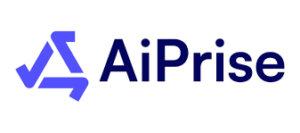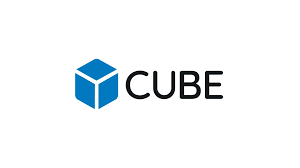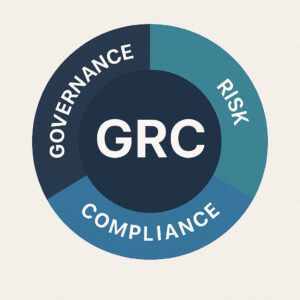Global RegTech Market Rides AI Wave to $100 Billion Boom

The global RegTech market is set to reach $100 billion by 2033, driven by AI-powered compliance solutions transforming financial institutions.
Regulatory technology is no longer a back-office afterthought. AI-driven platforms that automate risk detection, customer checks and regulatory filings are pulling in enterprise budgets once earmarked for legal and compliance staff, turning a fragmented toolkit market into a strategic software category that analysts now value in the tens of billions. The global RegTech market has become critical infrastructure for financial institutions navigating increasingly complex compliance demands.
The numbers tell the story. Allied Market Research pegged the global RegTech market at $11.7 billion in 2023, accelerating to $83.8 billion by 2033, a 21.6% compound annual growth rate. Grand View Research sees $70.6 billion by 2030, expanding at 23.1% annually. The ranges differ, but the trajectory doesn’t. Corporate compliance is becoming a software procurement line item, and AI is the reason why.
Machine learning and large language models have moved from pilot projects to production infrastructure, handling tasks that consumed thousands of analyst hours a year ago. The shift isn’t just about efficiency. It’s about expanding what’s possible. Compliance teams can now monitor transactions in real time across markets, spot emerging risk patterns before they crystallize into regulatory problems, and adapt to rule changes without rebuilding their entire technology stack.
AI Moves from Pilot to Production
Document verification that took days happens in minutes. Transaction monitoring systems spot money-laundering patterns that rule-based engines missed. Natural language processing tools parse new regulations across jurisdictions and auto-draft compliance reports. The technology has matured past the proof-of-concept stage into tools that compliance officers actually trust.
The shift is showing up in vendor metrics and customer testimonials. Firms deploying AI-based transaction monitoring report 30% to 40% improvements in detection rates alongside sharp drops in false positives that used to clog investigator queues. Onboarding times have fallen by half or more at institutions using computer vision and biometric matching for identity checks. Those efficiency gains translate directly to revenue. Faster onboarding means faster monetization, and better AML detection means lower regulatory fines and reduced reputational risk.
Three use cases are driving adoption across the market. Identity verification combines optical character recognition, biometric data and behavioral signals to cut friction in customer onboarding while maintaining security standards. The systems can verify documents from dozens of countries, cross-check against sanctions lists, and flag inconsistencies that manual reviewers miss when processing hundreds of applications daily.
Transaction monitoring layers supervised and unsupervised learning on top of legacy rule sets to surface anomalies human investigators would overlook. The algorithms learn from historical patterns, adapt to new typologies, and reduce the false positive rate that has plagued AML programs for decades. One European bank reported cutting its alert volume by 60% while actually increasing the number of suspicious activity reports filed. That’s a sign the system was finding real problems buried in noise.
Regulatory intelligence platforms use LLMs to track rule changes, map them to internal controls and generate filing drafts. This capability matters more as cross-border institutions juggle hundreds of regulatory updates monthly. These systems parse regulatory bulletins, compare them to existing policies, highlight conflicts or gaps, and suggest remediation steps. For institutions operating in ten or twenty jurisdictions, that automation is the difference between staying current and falling behind.
North America Leads, Asia-Pacific Accelerates
North America remains the largest market, claiming roughly 30% of global spending. U.S. banks and a dense fintech sector drive demand, supported by regulatory frameworks that reward, and increasingly require, technology-driven compliance. The Office of the Comptroller of the Currency and the Federal Reserve have both signaled openness to AI-driven compliance, provided firms can demonstrate model governance and explainability.
Europe follows, where GDPR, MiFID II and mounting ESG mandates keep compliance budgets flowing to software vendors. Regulators in the EU have been explicit about digital standards, giving vendors clearer targets to build against. The European Banking Authority’s guidelines on outsourcing and cloud computing have also created compliance requirements that RegTech vendors can solve, turning regulatory burden into market opportunity.
Asia-Pacific is the growth story. Singapore’s Monetary Authority has built a regulatory sandbox that lets firms test compliance technology in controlled environments. Hong Kong’s Securities and Futures Commission is pushing for real-time reporting and digital submission formats. Parts of Southeast Asia are digitizing oversight and creating early markets for cross-border RegTech. China’s regulatory shifts around data localization and financial risk management add complexity that only software can manage at scale. India’s financial expansion, driven by digital payments and fintech lending, is creating compliance requirements that leapfrog traditional approaches.
Multiple research houses flag APAC as the fastest-growing region through 2030, with growth rates in some markets exceeding 25% annually. The region’s advantage is regulatory willingness to skip legacy approaches and move straight to digital-native compliance frameworks. As the global RegTech market expands, Asia-Pacific is positioning itself as the primary growth engine.
Venture Funding Returns After 2023 Pullback
Venture funding mirrored the regional trend. After a 2023 slowdown that hit growth-stage startups hardest, capital returned in 2024 and 2025, especially for AI-first startups tackling KYC, crypto compliance and automated reporting. Investors are hunting for companies with proprietary data sets, multi-jurisdictional coverage, and embedded integration into core banking or payment workflows.
Strategic buyers, including core banking platforms, enterprise data vendors, and payment processors, are hunting for acquisitions to plug capability gaps fast. The logic is straightforward: building AI compliance capability in-house takes years and specialized talent that’s expensive to hire. Buying a RegTech startup gets you the technology, the team, and existing customer relationships in one transaction. Valuations have stayed elevated for vendors with proven enterprise traction and differentiated IP.
SupTech Creates a Feedback Loop
Regulators aren’t just demanding better compliance. They’re digitizing their own oversight. Supervisory technology platforms, or SupTech, are pushing financial institutions toward standardized, machine-readable submissions. The Bank of England, the European Central Bank, and the Monetary Authority of Singapore have all deployed SupTech pilots or production systems that analyze data submitted by regulated entities.
That creates a feedback loop: as regulators go digital, firms must upgrade, and RegTech vendors find clearer product-market fit. Regulators expect JSON or XML formatted data feeds instead of PDF reports. They want near-real-time access to risk metrics instead of quarterly snapshots. Meeting those expectations requires technology investment, and most institutions prefer buying from specialists rather than building proprietary systems.
New rules around data privacy, operational resilience, ESG disclosure and crypto have accelerated the cycle. Each regulatory expansion creates fresh demand for automated monitoring. That’s one reason forecasts have climbed over the past 18 months. The regulatory pipeline is full, and compliance complexity is compounding.
Risks Remain: Model Governance, Legacy Systems, Security
AI scales compliance, but it introduces governance headaches. False positives, explainability requirements, data lineage tracking and adversarial attacks are live operational issues. Regulators want to see model validation frameworks, testing protocols, and documentation that proves the AI isn’t a black box. Buyers are investing in model risk management teams, human-in-the-loop workflows and audit trails to keep regulators satisfied and avoid enforcement actions.
Legacy system integration is another drag. Banks running decades-old on-premise infrastructure can’t flip a switch to cloud-based AI platforms. Migration takes years and careful sequencing to avoid breaking live systems. Core banking platforms, general ledgers, and risk data warehouses weren’t designed to feed modern AI models, so institutions face expensive middleware projects before they can deploy cutting-edge RegTech. This integration challenge is one reason the global RegTech market remains fragmented, with different vendors solving different pieces of the compliance puzzle.
Security is non-negotiable. RegTech platforms handle customer identities and transaction records, data that’s valuable by design and a magnet for bad actors. Vendors need enterprise-grade encryption, access controls, and incident response plans. Any breach becomes a regulatory event, which means security failures can kill a vendor’s reputation overnight.
Who Wins: Data, Coverage, Integration
The market is fragmenting into specialty niches (KYC, transaction monitoring, regulatory intelligence, ESG automation) and consolidating through M&A. Established compliance vendors are buying AI startups to avoid disruption. Pure-play AI shops are getting snapped up for IP and talent. The middle ground is shrinking: vendors either scale fast or get acquired.
Investors eyeing the space should track three factors. Data moat: does the vendor own exclusive datasets that improve model quality? Proprietary data on sanctions, adverse media, or beneficial ownership creates defensibility. Regulatory coverage: can the platform map rules across jurisdictions, or is it limited to a single market? Cross-border institutions pay premiums for vendors that handle U.S., EU, and APAC requirements in one system. Integration depth: is the solution embedded in core workflows like onboarding and payments, or is it a bolt-on reporting tool? Embedded RegTech captures more value and faces higher switching costs because ripping it out means reengineering production systems.
The $100 Billion Question
Whether the global RegTech market hits $70 billion, $80 billion or pushes past $100 billion by decade’s end depends partly on category definitions and what analysts include in their scope. But every credible forecast agrees on rapid expansion as rules multiply, data volumes grow and AI lowers the marginal cost of compliance. The trend lines are consistent even when the endpoints vary.
For banks and asset managers, the strategic shift is clear. Compliance is code now, not paperwork. The winners will be institutions that can operationalize AI safely and at scale, turning regulatory burden into competitive edge. Faster onboarding, lower false positive rates, and better risk detection all show up in the income statement. For investors, RegTech is no longer a niche play. It’s infrastructure, and the market is big enough to support multiple winners across different categories and geographies.





